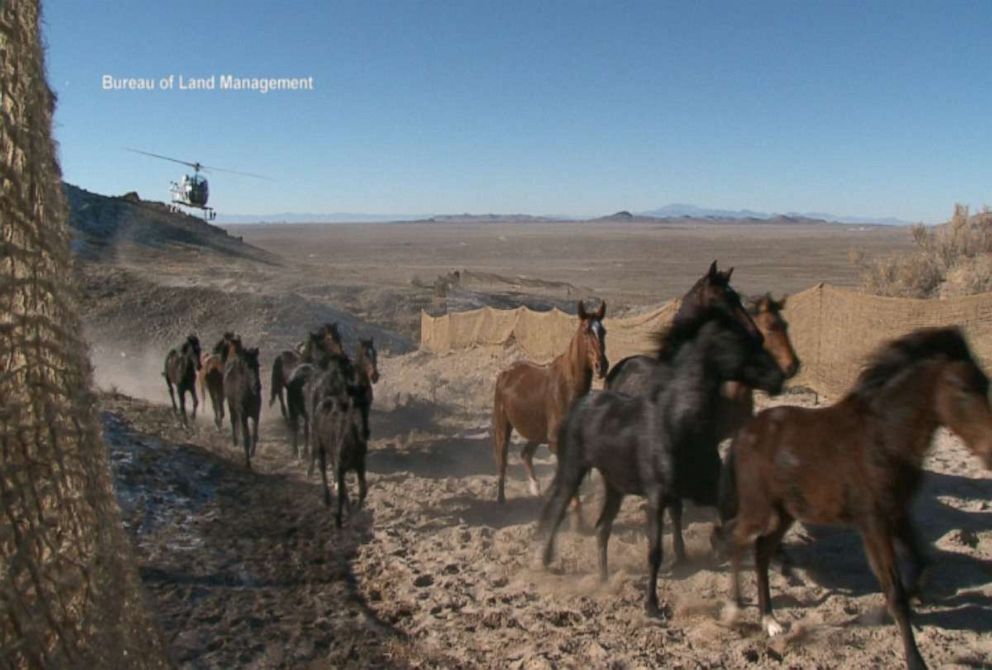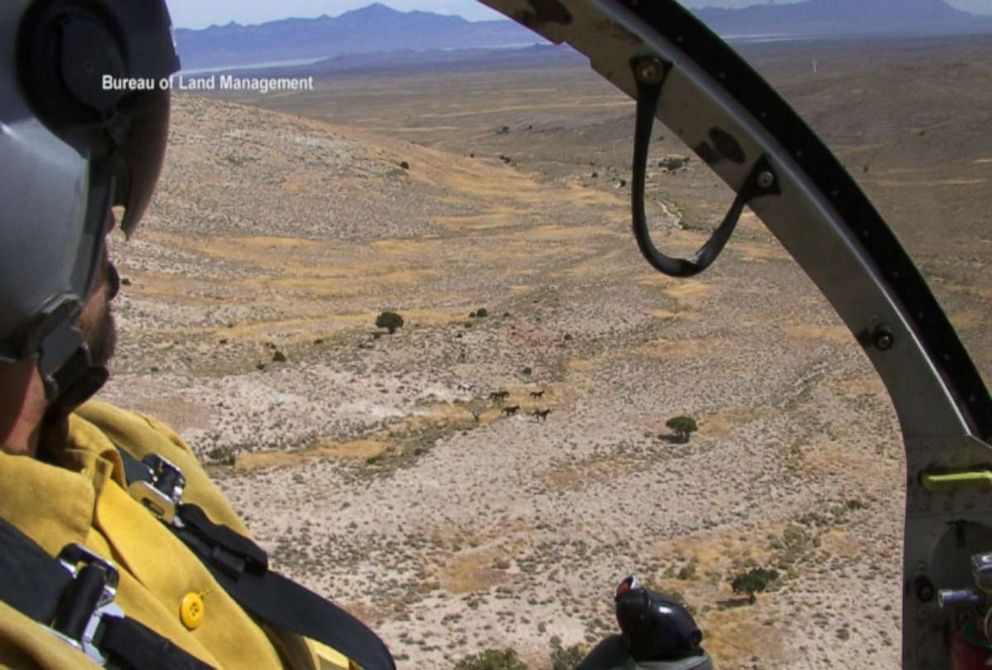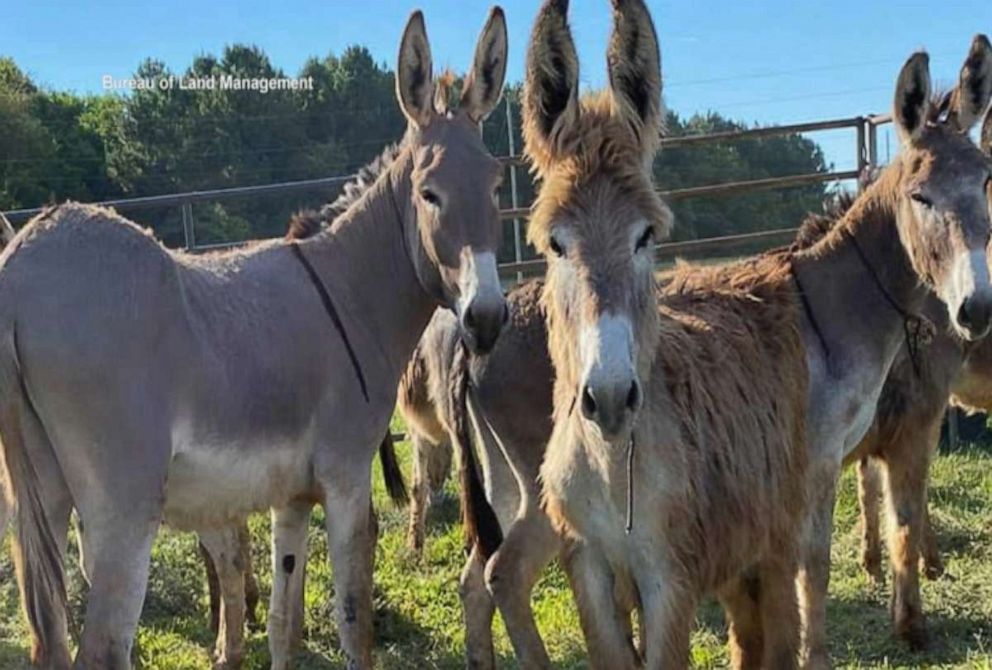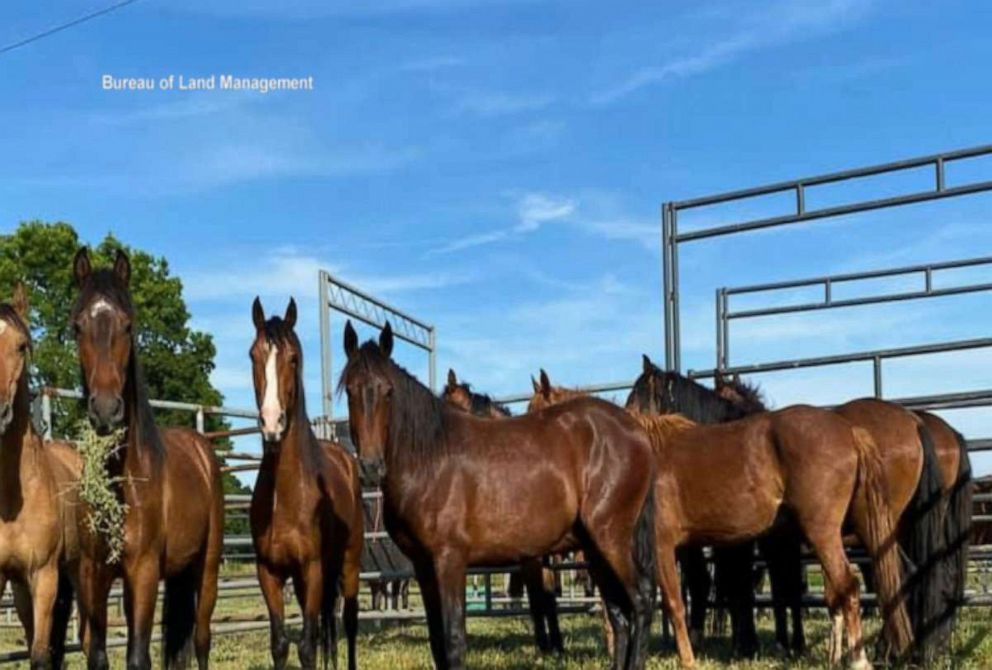It's not too late: Government looks for solution to growing wild horse population in American West
Each horse costs taxpayers $23,000, the Bureau of Land Management says.
Did you know there are thousands of wild horses freely roaming the American West?
There are so many that the government sends helicopters after them to help round them up and put them in holding facilities. That's been happening for at least 30 years.

But now, the wild horse and burro (donkey) population has reached a dangerous level -- according to the Bureau of Land Management, the group that manages them -- and aggressive measures need to be taken to reduce the number of wild horses.
Critics of the bureau do not agree with the way it has managed the issue in the past and worry that it isn't getting better, but worse.
To understand what's happening, it's important to take a step back and look at how it all started.
The horse population is managed by the Bureau of Land Management (BLM). The BLM is responsible for the care and protection of more than 245 million acres of public land: about one-eighth of the United States. That care and protection includes the population of wild horses.
Harry Truman started the BLM in the 1940s, with a mission "to sustain the health, diversity and productivity of the public lands for the use and enjoyment of present and future generations."
In the 1950s, Velma B. Johnston, later known as "Wild Horse Annie," led the charge against mustangers (people who killed wild horses, usually for pet food).
Wild horse Annie pushed for an actual law to protect wild horses from mustangers -- and she got it. It was named "The Wild Horse Annie Act." That made it illegal to kill mustangs using a motorized vehicle. But it wasn't enough. With humans taking over the land, and more mustanging, the number of wild horses went down to 25,300. So, in 1971 Congress unanimously passed the Wild and Free-Roaming Horses and Burros Act. This 1971 law put the BLM in charge of managing and protecting the horses and donkeys.
Finally, they were able to manage and protect the vulnerable population of animals, but, they said, it went almost too well. By 1980 there were just over 60,000 wild horses and burros. That is too many, according to the BLM. So, to protect the land and other wildlife from the horses, the BLM started rounding them up using helicopters and water traps.

"If you just let nature be nature, the horses run out of range, they sometimes run out of water even and what we're left with is a very inhumane situation where we're not adequately managing these... animals, and they face starvation and death," Casey Hamond, the assistant secretary for Land and Minerals Management told ABC News. Hammond is the U.S. Department of the Interior official that oversees the BLM. He's also served as the acting director of the agency.
Today, the BLM estimates that there are 95,000 wild horses on public land -- way more than they want. Hammond and the BLM say the appropriate number of horses for the land they have to roam on is 27,000, meaning they have to figure out what to do with 68,000 wild horses and donkeys.
Marty Irby of Animal Wellness Action doesn't like that math.
"There's really no need to bring that population down by any number," Irby said. "There are herds that could be moved to other areas. There's plenty of land... and that all goes back to being beholden to these cattle ranchers and big agriculture interests." She argued that the BLM's number "just doesn't make sense."
Most of the groups critical of the BLM say that it cares more about cattle than horses. They say the bureau inflates its estimates of the wild horse and burro population and makes the animals scapegoats for cattle rangers, oil and gas. Even though some have blamed wild horses for damage to BLM lands, a 2017 report from the Government Accountability Office says they need to study whether it's the wild horses or the livestock that's ruining the land.
Another point of contention between activists and the BLM is what happens to the horses after they are gathered.

Currently, they go into a holding facility, where, unless they are adopted, they will spend the rest of their life. There are about 50,000 in captivity. The BLM estimates each horse costs taxpayers $23,000 over its lifetime. That's a problem, as the bureau has spent nearly $390 million holding horses since 2012.

Concerns about overpopulation became so bad that the administration proposed lifting bans on horse slaughter in 2018, but that didn't go over well. Their only outlet now, after a horse is brought in from the wild, is adoption.
"We've created an adoption incentive program. What we've done is offered $1,000 to help offset the cost of adopting a horse and burro. That plan, and the program, has been wildly successful in the last year," Hammond said, adding that in the last fiscal year they were able to increase adoptions over 50%.
The BLM said the 7,100 adoptions last year saved taxpayers about $170 million. Some BLM critics say the adoptions are not regulated well enough and that they actually end in mass slaughter. Those fears were realized with a case in 2007 where 1700 horses were adopted by one man in Colorado who then took them to Mexico to get killed. The BLM said it has measures in place to ensure this will not happen anymore, including not giving adopters the license over the horse until a year after the adoption.
"The program is dedicated to follow up," Hammond said. "The BLM will go out and check on the welfare of those horses and verify that they're living up, that the doctors are living up to their side of the adoption agreement, which of course is taking care of the animal through birth, lifetime, and not doing something illegal."
Many groups believe the BLM needs more money to tackle this problem, but a recurring issue is the fact that the wild horse and burro program is funded on a yearly basis, which makes it hard to plan long term.
"Instead of getting angry at anyone, we need to gather everyone together... solutions have to be based on reality... the reality is getting pretty desperate," Celesete Carlisle, who serves on the government's wild horse and burro advisory committee, told ABC News.
Another solution she said is necessary in addition to round-ups is birth control, which Carlisle believes, if done correctly, can slowly replace the need to hold horses indefinitely.
"Unfortunately with the numbers there are now, fertility control would have to go alongside some gather removals until you sort of equilibrate that process and that ability to then be relying more completely on fertility control and less on gather removals," she said
A study by The National Academies Press showed that roundups can actually increase the number of horses, because the biologic response of horses when numbers go down is to procreate even more.
The BLM just got $21 million on top of their regular funding from Congress, and there is bipartisan support for addressing this issue. Carlisle said any plan needs to account for the next few decades -- something that is difficult with constant turnovers in leadership at the BLM. The current acting director, William Pendley, is awaiting Senate confirmation. His past statements on wild horses have some horse activists riled up. Speaking at a conference last year, he called the wild horse situation, "the existential threat to the quality of those [BLM] lands," and added that the problem requires tens of millions of dollars.
"It's been really terrible under the Trump administration, but it was bad under Obama, it was bad under Bush and it was bad under Clinton, so, you know, this is a culture that they haven't had there," Irby said.
Hammond said the BLM is trying to change this.
"I've often said that previous administrations were brilliant on how they dealt with the situation. And what made them... was that they did nothing, doing nothing is the very easiest thing you can do to avoid criticism and avoid the challenges, but this president and Secretary of the Interior David Bernhardt have higher expectations of us, and we're not going to sit back and look this property at work," he said.
Climate change has caused even more stress for the horses and the lands, as more acres are leased to oil and gas. There are also more fences and less waste, which has led to a tipping point for the "living symbols of the historic and pioneer spirit of the West."
Almost all advocates and experts agree the choices made now will determine if wild horses will live healthy and free for generations to come.




